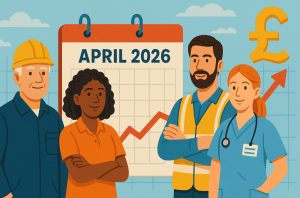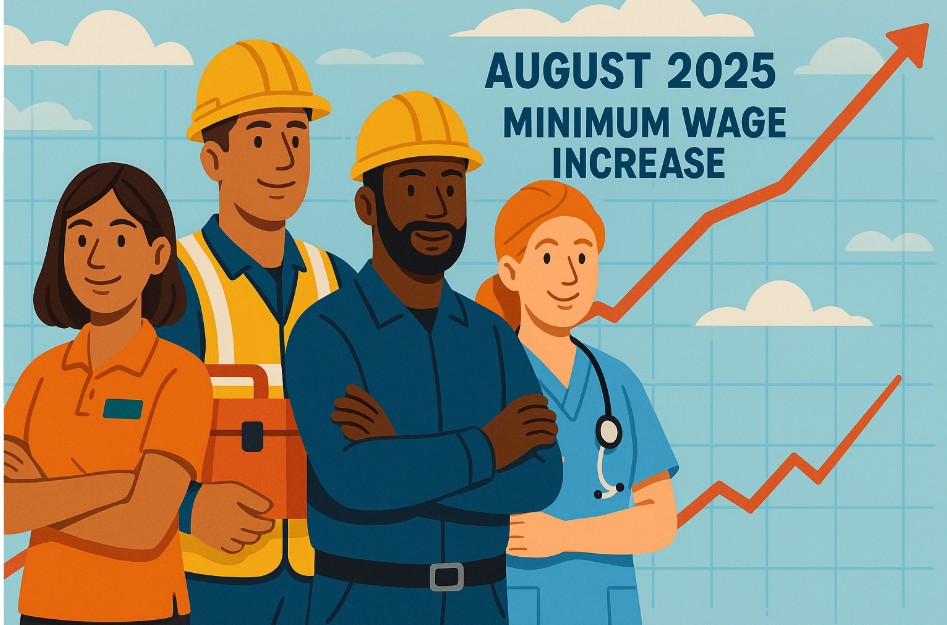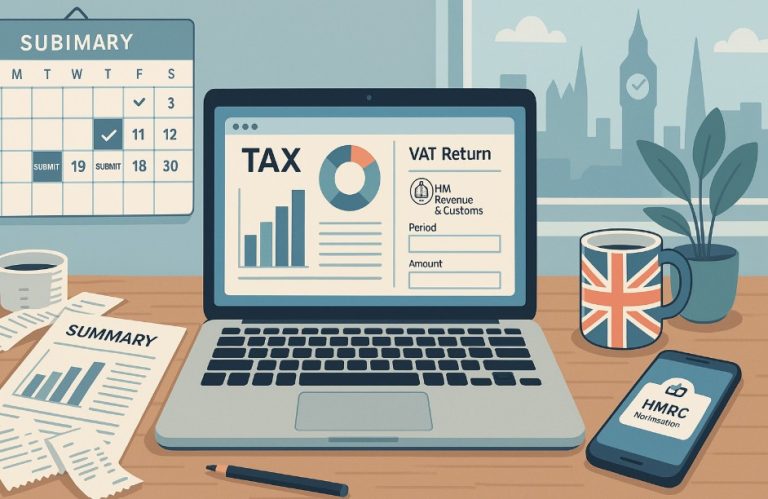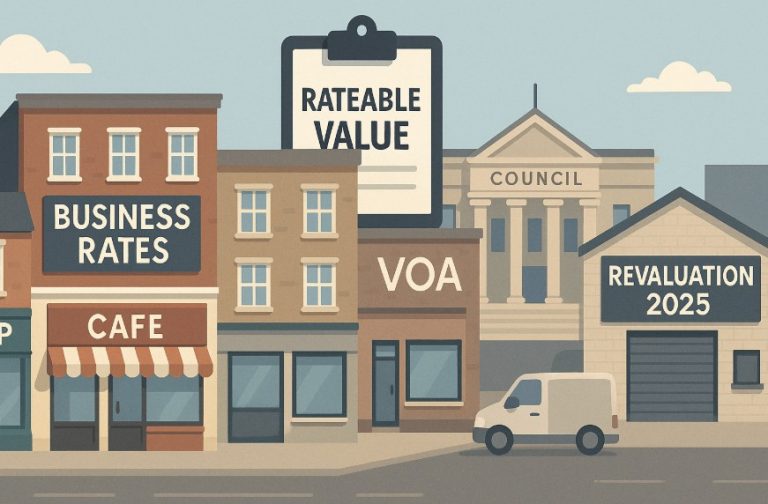UK Minimum Wage Increase August 2025 – What You Need to Know?
How much will workers in the UK be earning in the near future? What does the latest government announcement mean for both employees and employers? And why is the conversation about the minimum wage once again in the spotlight?
On 5 August 2025, the UK Government made a significant statement about the country’s wage policy. While no immediate changes to pay rates were introduced in August itself, the Government set out the Low Pay Commission’s remit for deciding the National Minimum Wage (NMW) and National Living Wage (NLW) rates that will take effect from April 2026.
The announcement reflects a central commitment within the Government’s Growth Mission: to ensure that working people see tangible improvements in their living standards.
A major part of this plan involves maintaining the National Living Wage at a level no lower than two-thirds of median UK earnings for those eligible, a recognised threshold for reducing low pay.
However, the remit is not purely mathematical. The Low Pay Commission has been tasked with considering a range of economic factors when recommending the 2026 rates.
This means examining the state of the labour market, analysing inflation forecasts, assessing the impact on UK business competitiveness, and responding to wider macroeconomic trends before arriving at a final recommendation.
What Are the Current Minimum Wage Rates in 2025?
The last official adjustment to the minimum wage came into effect on 1 April 2025, and these rates remain in place as of August 2025.
They reflect some of the most substantial increases in recent years, particularly for younger workers and apprentices, where percentage rises were in double digits.
The table below provides a full breakdown of the current statutory hourly rates and the changes introduced earlier this year:
| Age/Category | Hourly Rate (from 1 April 2025) | Annual Increase (£) | Annual Increase (%) |
| National Living Wage (21 and over) | £12.21 | £0.77 | 6.7% |
| 18–20 Years Old | £10.00 | £1.40 | 16.3% |
| 16–17 Years Old | £7.55 | £1.15 | 18.0% |
| Apprentice Rate | £7.55 | £1.15 | 18.0% |
| Accommodation Offset | £10.66 | £0.67 | 6.7% |
For millions of workers, these increases represented a meaningful improvement in take-home pay. The larger percentage gains for younger employees are part of a deliberate policy to reduce the pay gap between them and the highest adult rate.
What Could the National Living Wage Be in April 2026?

Although the final decision on the April 2026 rates will not be made until later in the year, the Low Pay Commission has released early projections.
Its central estimate is that the National Living Wage will need to rise to £12.71 per hour, an increase of approximately 4.1%, to keep pace with the two-thirds median earnings target.
Given the difficulty of forecasting exact figures in a fluctuating economy, the Commission has also provided a range of possible outcomes. The lower bound estimate is £12.55, while the upper bound reaches £12.86.
These figures are slightly higher than those published in May 2025, largely due to stronger-than-expected wage growth earlier in the year and more optimistic forecasts for the remainder of 2025.
If wage growth continues to outperform projections, the final recommendation in October could be towards the higher end of the range or possibly above it.
Why Are Minimum Wages Rising So Significantly?
The upward trajectory of minimum wages in the UK is being driven by several interrelated factors. One of the most immediate is the cost of living, which has remained elevated due to ongoing inflationary pressures.
The Government has made clear that statutory pay must keep pace with these rising costs to avoid eroding workers’ purchasing power.
Another major influence is the strength of wage growth across the economy. Earnings in the first half of 2025 have increased at a faster rate than many analysts predicted, which in turn has shifted the benchmarks used to calculate the NLW target.
The Government’s long-term policy direction centred on ensuring that work genuinely pays, means that periods of strong economic performance are likely to translate into real-term gains for workers.
At the same time, the UK labour market remains competitive. Many employers, especially in sectors such as hospitality, retail, and social care, face ongoing recruitment and retention challenges.
Higher statutory wages can help address these pressures by making roles more attractive to potential employees.
How Will the August 2025 Update Affect Workers and Businesses?

While the August 2025 announcement itself does not alter pay rates immediately, it sets clear expectations for both workers and employers.
For employees, it offers reassurance that further wage growth is on the horizon, with April 2026 almost certain to bring another above-inflation rise.
For businesses, the message is equally clear: the cost of labour is unlikely to decrease any time soon. Organisations will need to adapt by reviewing budgets, pricing strategies, and operational efficiencies.
Those who begin preparing now will be better positioned to handle the upcoming increases without significant disruption.
When Will the April 2026 Rates Be Finalised?
The timeline for the next wage adjustment follows a well-established pattern. The Low Pay Commission will deliver its recommendations to the Government by the end of October 2025.
After reviewing these, the Government will formally announce the April 2026 rates before the end of the year. This allows employers several months to incorporate the new figures into their planning and payroll systems.
What Should Employers Do Now to Prepare?

Although the April 2026 increase is still months away, prudent employers are already taking steps to ensure a smooth transition. Many are forecasting wage bills using the upper range estimate of £12.86 per hour for the NLW to avoid being caught off guard.
Businesses are also exploring ways to boost productivity, from investing in staff training to upgrading technology.
Clear communication with HR teams, payroll providers, and managers is essential, ensuring that everyone understands both the timing and the likely scale of the increase.
What Does This Mean for the Future of UK Wage Policy?
The August 2025 remit signals a continuation of the Government’s commitment to linking the National Living Wage to a proportion of median earnings.
This approach ties wage policy directly to broader economic performance, providing a balance between protecting workers and maintaining business competitiveness.
If economic growth remains steady and wage growth continues to outpace inflation, workers can expect gradual improvements in their standard of living. However, this also means that businesses must plan for sustained upward pressure on wages for the foreseeable future.
Frequently Asked Questions
What is the UK minimum wage in August 2025?
It is the rate set in April 2025: £12.21 for workers aged 21 and over, with lower rates for younger workers and apprentices.
Did the August 2025 announcement raise wages immediately?
No, the announcement concerned the remit for setting April 2026 rates and did not change current pay levels.
How high could the National Living Wage go in April 2026?
The Low Pay Commission estimates between £12.55 and £12.86, with a central figure of £12.71.
Why did younger workers see larger percentage increases in April 2025?
The Government aimed to close the pay gap between youth rates and the National Living Wage, resulting in above-average percentage rises.
Who decides the final April 2026 rates?
The Low Pay Commission makes recommendations, but the Government announces the final figures.
When will the April 2026 rates be confirmed?
By the end of 2025, after the Low Pay Commission submits its advice in October.
How does this fit into the UK’s long-term wage policy?
The Government is committed to keeping the National Living Wage above two-thirds of median earnings, meaning future increases are likely to continue.







